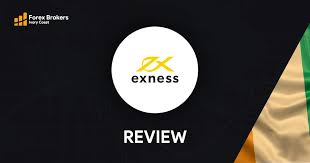Understanding Competitive Exness Fees: A Comprehensive Guide
If you’re considering trading with Exness, understanding the competitive Exness fees https://trendseninnovaties.nl/trading-patterns-on-exness-41/ is crucial for your trading success. This article delves into various fees, types of accounts, and how you can maximize your trading potential while minimizing costs.
What are Exness Fees?
Exness fees encompass several costs associated with trading on their platform. These fees can be broadly categorized into the following:
- Spreads
- Commission fees
- Overnight fees (swap fees)
- Withdrawal and deposit fees
1. Spreads
The spread is the difference between the buying (ask) price and the selling (bid) price of a currency pair. Exness offers competitive spreads that vary depending on the trading account type you choose. There are two main types of spreads offered by Exness:
- Fixed Spreads: These remain constant regardless of market conditions.
- Variable Spreads: These can fluctuate based on market conditions.
For instance, a typical spread might range from 0.0 pips for certain account types during optimal market conditions.
2. Commission Fees
In addition to spreads, Exness charges commission fees for certain accounts, particularly for those that offer lower spreads. The commission structure is designed to provide traders with flexibility in managing their costs. Common account types where commission fees apply include Pro and Raw Spread accounts. For instance, the commission might be around $3.5 per side for a standard lot traded.
3. Overnight Fees (Swap Fees)

Overnight fees, also known as swap fees, are applicable if a position is held overnight. Exness applies a swap rate based on the underlying currency pair and the interest rates of the two currencies involved. It’s essential for traders to be aware of these rates as they can significantly impact profitability when positions are held for extended periods.
4. Withdrawal and Deposit Fees
Exness does not charge deposit fees for most payment methods, making it easier for traders to fund their accounts. However, withdrawal fees can vary depending on the method chosen. For example, some e-wallet services may have minimal fees, while bank transfers might incur higher costs. It’s critical to check the fee schedule on the Exness website to choose the most cost-effective option.
Comparing Competitor Fees
When examining Exness fees, it’s beneficial to compare them against competitor brokers. While many brokers may offer low or zero spreads, they might charge higher commissions or withdrawal fees. Therefore, a comprehensive evaluation of costs across various brokers is recommended.
Some of the popular alternatives to Exness include brokers like IC Markets and HotForex. By comparing their fee structures, traders can make an informed decision about which broker aligns with their trading strategy.
Account Types and Their Fees
Exness provides a range of account types to suit different trader preferences. Here’s a brief overview of each type and its associated fees:
- Standard Account: Features wider spreads but no commission fees, making it suitable for beginners.
- Pro Account: Offers smaller spreads and a commission structure, appealing to more experienced traders.
- Raw Spread Account: Provides the tightest spreads available but charges higher commissions, ideal for high-frequency traders.
How to Minimize Your Trading Costs
To make the most of your trading experience on Exness, consider the following strategies to minimize your fees:
- Select the Right Account Type: Choose an account that aligns with your trading style. If you plan on trading many small positions, a commission-based account might be better, while longer-term traders might prefer fixed spreads.
- Optimize Your Trading Strategy: Incorporate strategies that minimize the duration of holdings to reduce swap fees.
- Utilize Promotions: Keep an eye out for special promotions or reduced fees that Exness may offer occasionally.
Conclusion
Understanding competitive Exness fees is essential for both new and experienced traders. By recognizing the various components, such as spreads and commission structures, you can optimize your trading strategy and minimize costs. Always consider comparing these fees with other brokers to find the most cost-effective solution for your trading needs. By choosing wisely, you can enhance your trading experience and work towards maximizing your profit potential.
